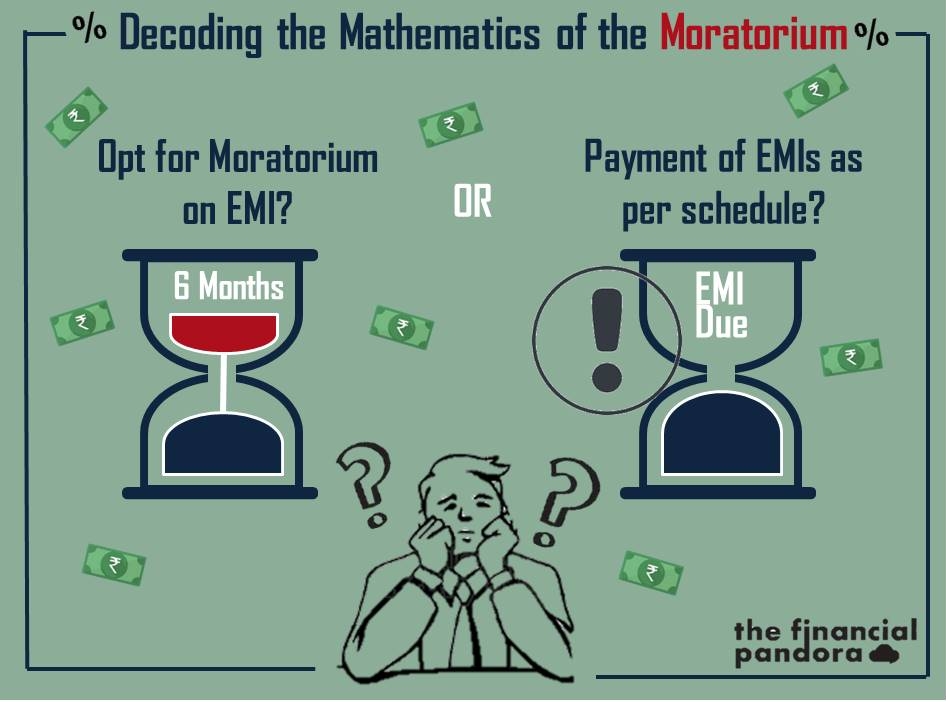One of the recent announcements by the RBI was extension of moratorium by banks on loans to borrowers. This came in as relief measure to the borrowers since they can now defer their EMIs for a further period of 3 months (total 6 months considering the earlier moratorium of 3 months). However, is it indeed a relief? Let’s decode it.
Case Study
Hypothetically, let us say Mr. X took a housing loan of 1 Cr at 8% fixed interest for 20 years in March 2020.
The EMI payable by Mr. X would be Rs. 83,644.
Now due to Covid, Mr X has asked his bank to defer the EMIs by 6 months as Mr X feels that it would be in his interest to defer the EMI. However, post 6 months, Mr. X finds that his EMI has increased to Rs. 86,990.
This is an increase by 4% in just 6 months (annually 8%). The increase in EMIs will be equal to your interest rate. The total payments on the entire loan has increased by Rs. 8.02 Lakhs.
This is almost equivalent to 10 more EMIs. Don’t forget, that it was a deferment of 6 EMIs and not the “waiver” of 6 EMIs. So in effect, just deferring the EMIs by 6 months would give you a headache of almost 10 more EMIs. Insane!
You can calculate the increase in your EMI due to moratorium.
Will Banks Benefit?
For Banks, it is a rosy darling as banks can raise funds @ 4%-6% whereas it has tied knot with you for 20 years at the rate of 8%. Clearly shows why banks may call you and ask you to avail the option of moratorium.
We may conclude that unless otherwise necessarily required, the exercise of moratorium maybe detrimental for people with larger tenure loans and may turn out to be a bane rather than a boon.
Liked the Article you just read? Show us your support by clicking that like button and sharing it with your friends using #tfpforall. Also don’t forget to leave your thoughts about the article in the comment section below.
You can become a part of our mailing list by clicking here

